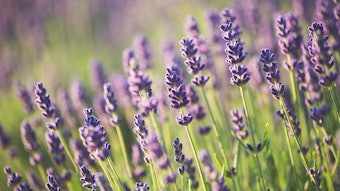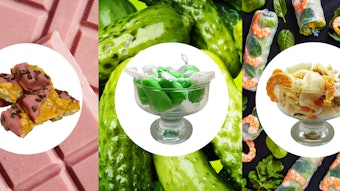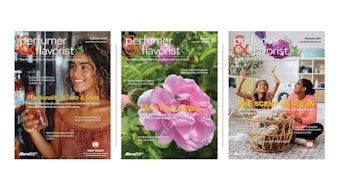During his presentation at the February meeting of the Society of Flavor Chemists in Newark, NJ, John Waldradt (Symrise) cited an astonishing statistic: 50% of global mortality is attributable directly or indirectly to nutrition. As the world's food and beverage companies work to make healthier products, a large number of challenges have arisen for flavorists, including:
- low fat
- low carbohydrate
- high fiber
- soy (particularly the material's inherent "beaniness")
- functional peptides
- polyphenols
Today's flavor chemistry is a "marriage of machine and human senses," Waldradt noted. Despite that flavor challenges are evolving, successful flavor creation remains a complex matrix of pattern recognition: experience, expectation, classification and correlation, which leads to preference and recognition. Waldradt focused on the measurement of flavor release via recent technologies such as the artificial mouth, MS-Nose Space and Symrise's LC-Taste, which can, for example, identify bitter compounds for elimination or masking, a key need in soy products.
Taste modifiers, including sweet enhancers, are giving flavorists increasing opportunities to use flavor and aroma to support health and nutrition. This is what Waldradt called the "power of and," the idea that flavors can add something above and beyond in applications.
Vanilla: a Perfumer's Perspective
Felix Buccellato (Custom Essence), who began his career at IFF around the same time as Waldradt, once worked as a flavorist, so he understands both sides of the F&F fence. Few materials are as important to flavorists and perfumers as vanilla. Buccellato noted that the individual identified components of the material stands at 300, but continues to grow. Today, nearly 50% of fragrances use vanilla or vanillin, particularly in amber accords that are resinous and citrusy, and animalic accords. Of course, this ubiquity has led to a lack of identity among scents on the fine fragrance market.
So, why is vanilla so popular? Buccellato pointed out a few possibilities: the fact that vanilla doesn't become olfactively unpleasant, even at high levels; and the material's complex olfactive character, which breaks down into a number of facets, including vanilla, fruity, caramel/cooked, woody, spicy and hydrocarbons.










